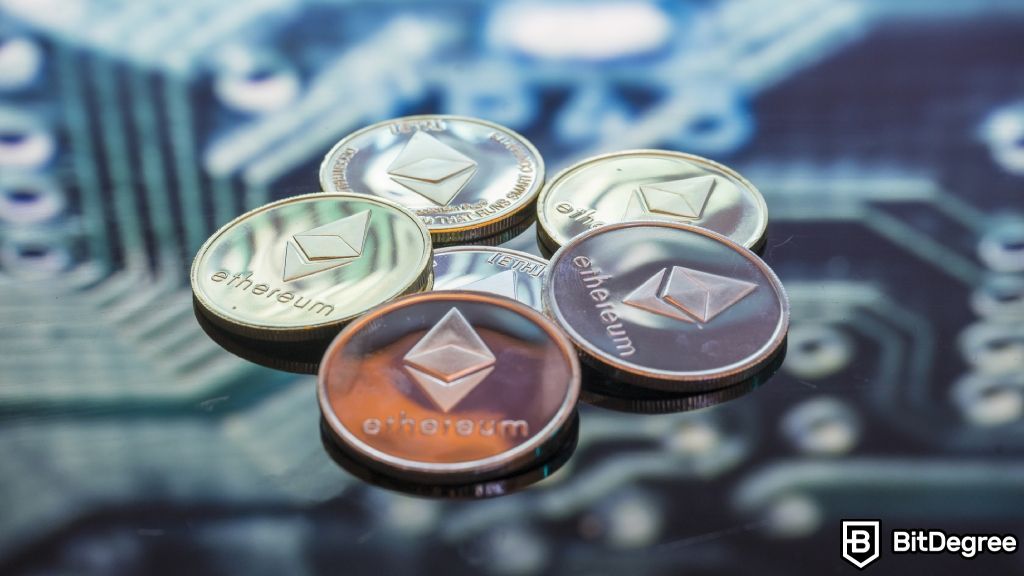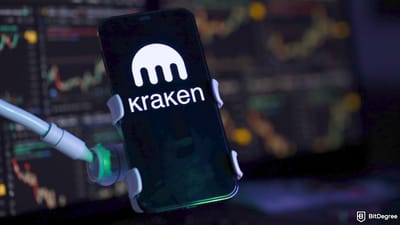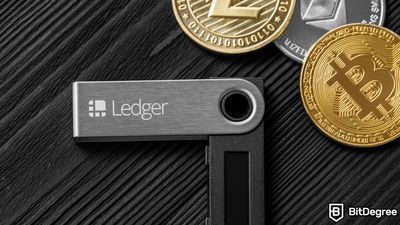Key Takeaways
- EIP-1559 revolutionized transaction processing on the Ethereum network, making fees more predictable and introducing a fee-burning mechanism;
- The EIP-1559 date of implementation was August 5th, 2021, and it happened in the midst of intense community debates;
- "Base fees" and "priority fees" have changed how users and miners engage with the network, leading to mixed reactions.
Stop overpaying - start transferring money with Ogvio. Join the waitlist & grab early Rewards NOW! 🎁
If you've been keeping an eye on Ether (ETH), the name EIP-1559 has likely crossed your radar. But what is EIP-1559, and why should you care? Simply put, EIP-1559 is one of the most transformative updates to hit the Ethereum blockchain that changed the network forever.
EIP-1559 transactions are game-changers that have revamped how Ethereum processes trades, affecting everything from fees to the broader economics of the network. Soon, you'll know what EIP-1559 is, when it was rolled out, and the big ways it's shaken up the crypto space.
By the way, if you get interested in Ether trading after learning what is EIP-1559, platforms like Binance and Bybit offer a smooth experience tailored to make the most of this update.

Did you know?
Subscribe - We publish new crypto explainer videos every week!
How to Buy Crypto SAFELY With a Credit Card (Animated)


Table of Contents
What is EIP-1559?
Without further ado, let's dive right into understanding what EIP-1559 is. EIP stands for Ethereum Improvement Proposal, and "1559" signifies that it's the 1559th proposal in a series of proposals aimed at enhancing the Ethereum Network. The EIP-1559 date of application on the Ethereum Network was August 5th, 2021.
Latest Deal Active Right Now:So, what is EIP-1559, exactly? Why is it such a big deal?
In simple terms, EIP-1559 was put forward to make Ethereum's transaction fee system more predictable and fair.
Now, you might be wondering why anyone felt the need to fix the transaction fee mechanism in the first place.
Before Ethereum EIP-1559 came into play, ETH used a first-price auction system to determine transaction fees. Think of it as a bidding war, where users compete against each other to get their transactions processed. You bid a certain amount, and if it's higher than what others are willing to pay, your transaction goes through.
Sounds simple, right?
However, if you've ever looked for any "EIP-1559 explained" articles or videos, you know this old system needed changes.

First off, it was a rollercoaster.
Transaction fees fluctuated wildly, making it really hard to anticipate how much you'd end up paying. And no one (or almost no one) likes to spend their hard-earned money in such an unpredictable environment.
Then there was the fairness aspect.
In the earlier system, if you had deeper pockets and could outbid others, your transaction would be processed first, no matter what it was for. Whether you were transferring a small sum to a friend or locking up millions in a smart contract, how much you were willing to pay was the defining factor.
Historically speaking, Ethereum has been through quite a journey since its launch in 2015, and one of the pressing issues for it has always been scalability. As more people started using the platform, the number of transactions rose, and so did the fees.
EIP-1559 brought significant alterations to Ethereum's fee system, notably a predictable base fee and an optional tip for miners[1]. These changes made fees more transparent and fair, while also providing some relief to scalability concerns.
Key Changes Introduced by EIP-1559
Having demystified what EIP-1559 is, let's delve deeper into the specifics, exploring the key modifications that this proposal has made. This way, you'll get an even clearer understanding of how it revolutionized the way transactions and fees work on Ethereum.
The Ethereum EIP-1559 aimed to tackle three main issues: unpredictability, unfairness, and complexity.
As mentioned before, because of the bidding system in the pre-EIP-1559 era, you couldn't easily predict the cost of making a transaction.
EIP-1559 aimed to make the fee structure simpler and more intuitive by introducing a base fee. The base fee is a minimum charge necessary for the processing of your EIP-1559 transaction. It varies with network congestion but is determined by the protocol itself, lending a degree of predictability to the overall cost[2].
In addition to the base fee, Ethereum EIP-1559 also brought in the concept of leaving a tip (aka priority fee), an optional amount you can offer to miners to expedite your EIP-1559 transaction. Unlike the base fee, which is algorithmically set, the tip goes directly to the miners as a form of incentive for quicker processing.

Another important aspect of EIP-1559 is that part of the base fee is now burned (in other words, permanently removed from circulation), which has implications for Ethereum's economic model by making ETH more scarce and, theoretically, more valuable.
All in all, the primary purpose of this improvement proposal was to make life easier for Ethereum users by making fees predictable, assuring no one's being sidelined, and simplifying the whole process. Besides that, with a portion of Ethereum's base fees being burned, ETH investors would have a better chance to profit.
So, to put it short, the question of "What is EIP-1559?" can be answered pretty easily: This EIP is a vital upgrade implemented to address some critical challenges in Ethereum's fee structure, paving the way for a more predictable, fair, profitable, and user-friendly ecosystem.
EIP-1559's Impact on Ethereum Users and Miners
Having covered the basics of what is EIP-1559, it's time to talk about what all of this means for Ethereum users and miners.
So, what is EIP-1559 capable of doing for Ethereum's users?
For users, one intriguing outcome of Ethereum EIP-1559 is the newfound transparency it offers. In the pre-EIP-1559 era, a lack of clarity on gas prices often led to transaction delays or, worse, overpayment. Now, users can more easily assess if they're getting a good deal, thanks to a clearer fee structure.
This could also lead to a more equitable and democratic Ethereum network over time, as better-informed users tend to make more efficient use of the blockchain they're engaging with.
On a macro level, the added predictability could attract more institutional investors to Ethereum, further solidifying its status as the leading blockchain for smart contracts.
What about miners, though? What is EIP-1559's significance to them?
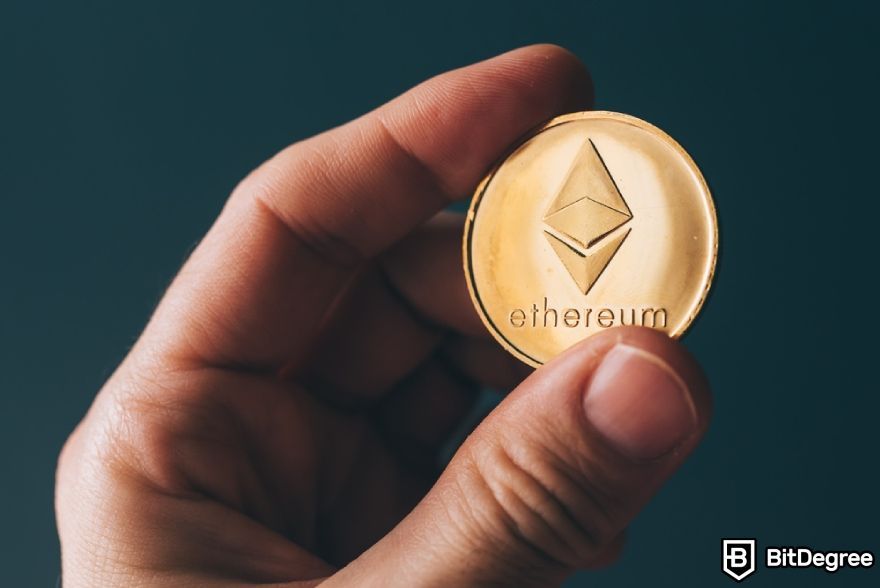
For miners, it has definitely changed the game, but not entirely in a negative way. While the burning of a portion of the base fee does dent their immediate revenue, there's another angle to consider. A more predictable fee model could actually lead to an increase in the number of transactions processed.
If users feel confident that their transactions won't be subject to whimsical fee spikes, they might engage more frequently with the Ethereum network. More transactions, even with smaller individual fees, usually means more consistent income for miners.
EIP-1559 also carries the subtler implication of altering miner behavior toward ethical practices. Since manipulating the fee market becomes more difficult, miners are nudged toward a more straightforward, honest way of conducting their business.
This makes the Ethereum network more secure and trustworthy in the eyes of both existing and potential future participants.
As far as Ether's price is concerned, it’s also worth noting that the reduced miner revenue has cascading effects on the market. Miners sell Ether to cover operational costs, and if their revenue decreases, there may be less selling pressure on the asset, which also influences its price positively.
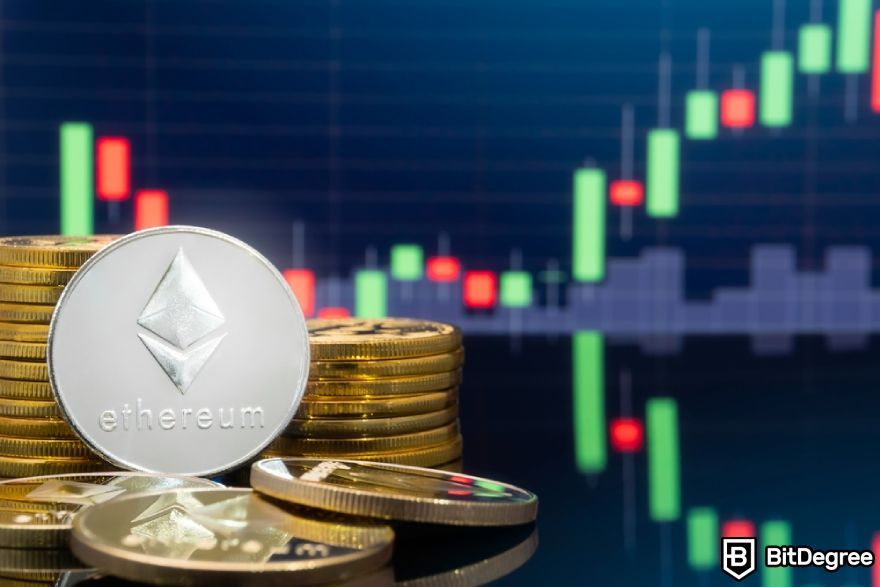
However, it's worth noting many other market factors come into play when talking about ETH's price, but that's not the main topic here. So, in case you want to analyze Ethereum's historical prices, be sure to check the ETH price chart on BitDegree's crypto tracker.
Lastly, let's touch upon how EIP-1559 impacted Ethereum's transition to Ethereum 2.0, which shifted the network from a Proof-of-Work (PoW) to a Proof-of-Stake (PoS) consensus mechanism.
EIP-1559 has a positive impact on Ethereum by decreasing the available Ether supply. This aligns perfectly with the Ethereum 2.0 objectives, which prioritize creating a sustainable and scalable network.
This improvement is particularly appealing to validators in Ethereum 2.0, as it enhances the attractiveness of staking, especially in the context of Ether's newfound deflationary tendencies.
In a nutshell, any "EIP-1559 explained" essay can describe this update as a sophisticated yet elegant enhancement that fulfills distinct but vital roles for different participants within the Ethereum ecosystem. Since its introduction on the critical EIP-1559 date of upgrade, the overarching narrative seems to be one of progress and innovation for Ethereum.
How to Pay Lower Fees When Trading ETH?
You've grasped the complexities of what is EIP-1559 and its impact on Ethereum's fee structure. But what about practical advice on how to save on those fees while trading ETH? Let's dive into some tried-and-true tips for doing just that.
Firstly, consider trading during off-peak hours. Just like traffic on the road, the Ethereum Network has busy and slow periods. Fees can spike during high-traffic times, so timing your post-EIP-1559 transactions when the network is less congested can save you some ETH. Tools like EtherScan and Blocknative can help you monitor network congestion in real-time.
Secondly, take advantage of both the base fee and the tip system that came with EIP-1559.
As you already know, the base fee is algorithmically determined and fluctuates based on network activity. However, the tip, or priority fee, is discretionary. If you're not in a hurry, you can choose to set a lower tip, saving you a bit on transaction costs. Just remember, doing this might make your transaction slower to confirm.
Batching transactions is another effective method. If you know you'll be making multiple trades or transfers, batch them into a single transaction. This not only reduces the total cost but also makes the process more efficient.

Another important thing to do is utilize Layer 2 solutions whenever possible.
Layer 2 solutions like Optimism and ZK-rollups can significantly reduce fees and speed up transactions. They operate on top of the Ethereum mainnet and are designed to be more cost-efficient. Although they're not suitable for every kind of transaction, they're a fantastic option for many common use cases.
You can also opt for decentralized exchanges (DEX) that offer lower fees. Several DEXs have structures set in place to offer lower transaction fees, especially when you are trading between tokens on the Ethereum blockchain.
Not all DEXs are created equally, though, so make sure to DYOR to find one that suits your goals while keeping your investments safe. Don't just go around trusting any service, especially because DEXs are overall less susceptible to regulatory interference than trustworthy CEXs like Binance or Coinbase. This means there may be fewer safeguards in place to protect your assets if something goes wrong.
Now, let's shift our focus to the controversies and community reactions linked to EIP-1559.
Controversies and Community Reaction
When EIP-1559 rolled out, it didn't just alter Ethereum's transaction fee model: it also stirred up a whirlwind of debates and mixed reactions within the community. Given what EIP-1559 is – a change aimed at making transaction fees more predictable – you'd think it would be met with open arms by everyone, but that was not the case.
Let's dig into the controversies and the diverse range of opinions that erupted from the Ethereum community.
Miners were at the epicenter of the debate. With part of the new base fees being burned instead of going to them, the prospect of reduced revenue loomed large. Many were left wondering, "What is EIP-1559 gonna do to my profits?".
Smaller mining pools were strong in their opposition, too. They argued that the upgrade could potentially compromise Ethereum's future and called on developers to explore alternatives that did not involve fee burning, in order to gain support from the mining community.

Some users also had their own set of concerns, which should be considered in any full "EIP-1559 explained" discussion. The base fee, being congestion-sensitive, could spike during high-traffic times. This could mean that, even with a more predictable fee structure, users could still find themselves paying hefty amounts during busy periods.
However, not everyone was skeptical. While some miners were vocal about their concerns, fearing that the profitability of their operations would plummet, others decided to analyze the EIP-1559 with a long term perspective.
To miners looking at the big picture, EIP-1559 was seen as a pathway to a more sustainable and efficient Ethereum network. By making the fee structure more predictable, these miners felt that user engagement would rise, thereby increasing the volume of transactions and potentially offsetting any losses in fees.
A good portion of the user base welcomed EIP-1559, too, as it brought much-needed transparency and predictability to transaction costs, attributes that they believed would bolster the network's credibility and usage in the long run.

Vitalik Buterin, the co-founder of Ethereum, called it one of the most significant upgrades. He praised the upgrade's ability to make the Ethereum network more "predictable, fair, and sustainable".
Tim Beiko, who works for the Ethereum Foundation, shared similar enthusiasm. He emphasized the upgrade's potential to improve the network's efficiency and affordability.
Eric Conner, another Ethereum team member, hailed it as a "game-changer" that effectively addresses many of Ethereum's existing challenges.
These varied perspectives highlight the intricate and multi-faceted discussions surrounding EIP-1559.
While the conversations around EIP-1559 were intense and, at times, polarized, it was a healthy exercise for the community. It prompted a deep-dive into how the upgrade would impact different stakeholders and revealed the trade-offs involved. Such debates are part and parcel of a maturing ecosystem and contribute to the overall robustness of the network.

Now, if you're wondering about any legal or regulatory troubles, you can rest easy. There were no significant legal issues tied to the implementation of EIP-1559. The Ethereum network operates as a decentralized entity, so it isn't under the purview of any single government or regulatory body.
To wrap things up, EIP-1559 is a landmark upgrade that fundamentally changed how Ethereum handles transaction fees. Since its launch on the pivotal EIP-1559 date of upgrade, opinions have been divided, yet the general consensus leans towards its long-term benefits for the network.
Also, let's not forget that the Ethereum network (and many other crypto projects out there) is intended to always be a work in progress, constantly developing, correcting errors, and improving. The Ethereum EIP-1559 is just one piece of a bigger puzzle. Ethereum's journey towards becoming a more efficient and sustainable network is not over.
EIP-1559's Comparison to Other Blockchain Fee Models
Let's dive into what EIP-1559 is compared to other major blockchains like Bitcoin, Cardano, and Binance Smart Chain. Understanding the nuances of different fee models can really help you appreciate what makes Ethereum's EIP-1559 stand out.
Now, Bitcoin keeps it straightforward. When you want to make a transaction, you pay a fee based on the transaction size and how busy the network is. The catch is that during high-demand periods, these fees can skyrocket, and you have no control over it.
Cardano, on the other hand, uses what they call the Ouroboros Hydra protocol. Sounds fancy, right? It essentially breaks down the network into smaller bits, known as shards, letting each one process transactions independently. This ramps up the speed and allows for predictable, sustainable fees, which can be a plus.
Then there's Binance Smart Chain. It's pretty similar to Ethereum but with a couple of key differences.
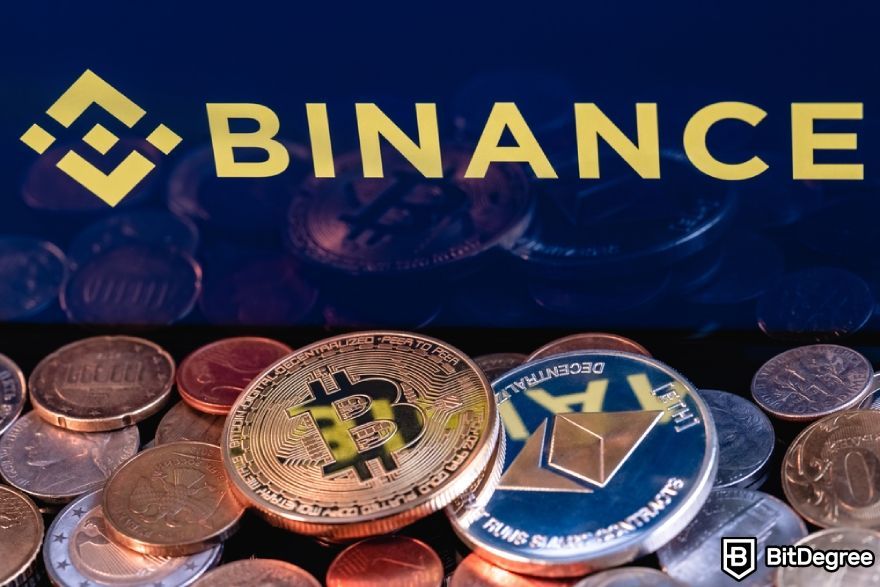
BSC has gained recognition for its cost-effective transaction fees. While Ethereum's block times can vary between roughly 2 to 14 seconds, BSC boasts a consistent 3-second block time. However, Ethereum's ongoing scaling improvements have the potential to alter its performance metrics.
EIP-1559 has already made its mark in the blockchain universe, making Ethereum more attractive for crypto investors. Since its implementation, this protocol has forced other blockchains to reevaluate their own fee models and scaling solutions.
Simply put, EIP-1559 has not only innovated within Ethereum but also raised the bar for what users can expect from blockchain fee models worldwide.
Other Popular EIPs
You've learned all about what EIP-1559 is, its features, and its impact on the Ethereum network, but Ethereum is a dynamic crypto project, always evolving and developing. EIP-1559 is far from the only proposal that has stirred the pot.
Now, let’s delve into some other influential EIPs that have played crucial roles in shaping the network we know and use today.
First up, we have EIP-20, which introduced the ERC-20 token standard. Before ERC-20 came onto the scene in November 2015, there was no standardized way of creating tokens on the Ethereum platform. ERC-20 offered a blueprint that made it easy for anyone to launch a token by following a set of guidelines.
ERC-20 has since become the cornerstone for most of the Ethereum-based tokens we see in circulation today, even for heavily used stablecoins like Tether (USDT) and USD Coin (USDC). So, if you've ever traded or held an Ethereum-based token, you've indirectly felt the impact of EIP-20.
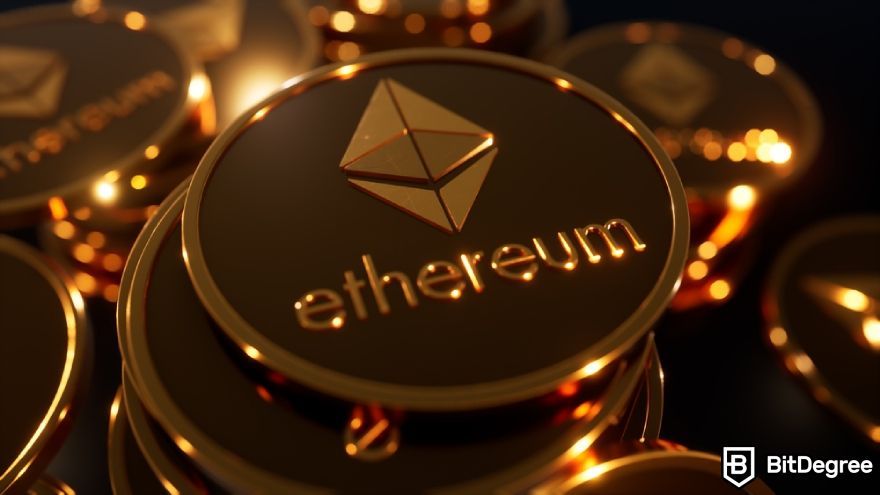
Moving further, the catalyst for the explosion of NTFs was EIP-721, which introduced the ERC-721, the non-fungible token standard. Proposed in January, 2018, this standard laid down the rules for creating and managing unique, indivisible tokens.
Unlike fungible tokens, where each token is interchangeable with another, non-fungible tokens are distinct and possess unique attributes. ERC-721 not only enabled a slew of diverse digital assets but also foresaw the potential this would bring to the digital economy.
Fast forward to today, NFTs have become a multi-billion-dollar market, with everything from artworks to virtual plots of land being tokenized.

Now, if ERC-20 set the stage for tokens and ERC-721 for NFTs, EIP-3675 has altered the very foundation on which these assets operate.
EIP-3675 was a pivotal proposal for the Ethereum 2.0 upgrade, which specifically focused on transitioning the network from a PoW to a PoS consensus algorithm. This Ethereum Improvement Proposal outlined the specifications for merging the Ethereum Mainnet with the Beacon Chain, serving as the backbone for the Ethereum 2.0 upgrade.
With the implementation of this Merge, the Ethereum network has become more scalable, secure, and sustainable. The proposal offered a comprehensive guide on executing this transition, detailing elements like validator roles, consensus rules, and how existing applications would interact with the new blockchain structure.
Developers, investors, and stakeholders in the Ethereum ecosystem paid close attention to the developments surrounding EIP-3675, given its significant impact on transaction speed, security features, and energy consumption of the network.

While we're on the topic of some of the newest Ethereum updates, I must also mention the Dencun update, which occurred on March 13th, 2024. It combined two big updates that happened simultaneously (Deneb and Cancun), introducing 9 new EIPs with the aim of improving scalability, efficiency, and security yet again.
However, the most noteworthy EIP out of those is EIP-4844, which significantly reduces transaction fees on Ethereum's Layer 2 networks. It does that by introducing proto-danksharding, which brings a new type of transactions called "blobs".
So, there you have it: a rundown of some other prominent EIPs that have shaped Ethereum into what it is today. These proposals are testaments to Ethereum's ever-evolving nature and the community's dedication to making it better, safer, and more efficient.
It's important to note the EIP system is not just about a single proposal or upgrade, but about a collective vision for a decentralized future. As Ethereum continues to mature, who knows what groundbreaking proposals we'll see next? One thing's for sure, though. Ethereum's journey is far from over, and the community's creative juices are showing no signs of running dry.
Conclusions
As we wrap up this in-depth look at what is EIP-1559, its game-changing impact on Ethereum and the broader crypto world becomes evident. EIP-1559 has shifted much of the network's fundamentals, from how transactions are processed and charged to Ethereum's economic model.
Despite varying opinions and ongoing debates, the impact on both users and miners is unequivocal. As the stage is set for future upgrades, staying updated on developments in the Ethereum network becomes vital.
In case you want to trade ETH in order to become part of this network's lively community, be sure to do so on a trustworthy platform like Binance, Bybit, or Kraken.
The content published on this website is not aimed to give any kind of financial, investment, trading, or any other form of advice. BitDegree.org does not endorse or suggest you to buy, sell or hold any kind of cryptocurrency. Before making financial investment decisions, do consult your financial advisor.
Scientific References
1. D. Reijsbergen, S. Sridhar, B. Monnot, et al.: ‘Transaction Fees on a Honeymoon: Ethereum's EIP-1559 One Month Later’;
2. Y. Liu, Y. Lu, K. Nayak, et al.: ‘Empirical Analysis of EIP-1559: Transaction Fees, Waiting Times, and Consensus Security’.
